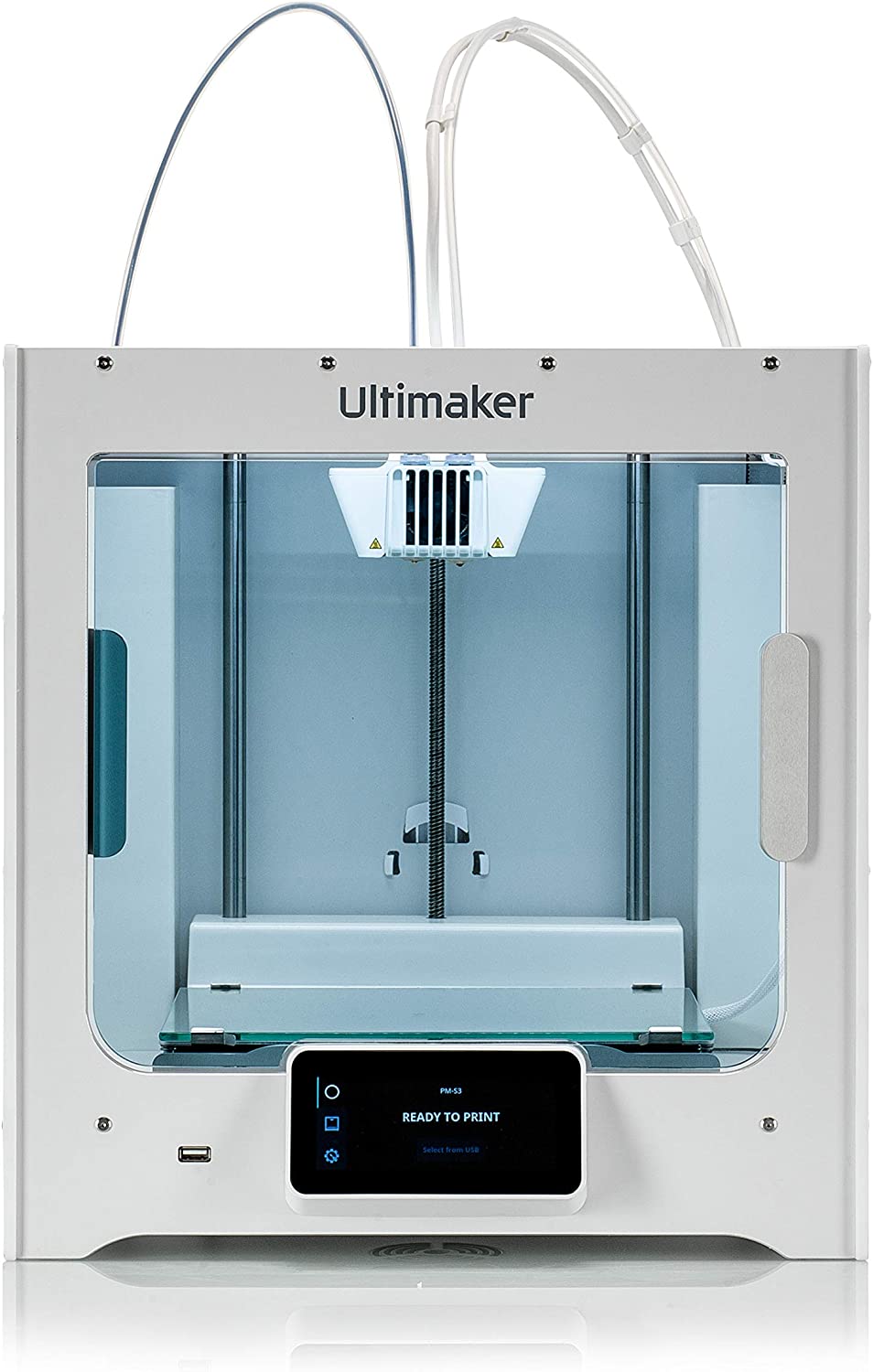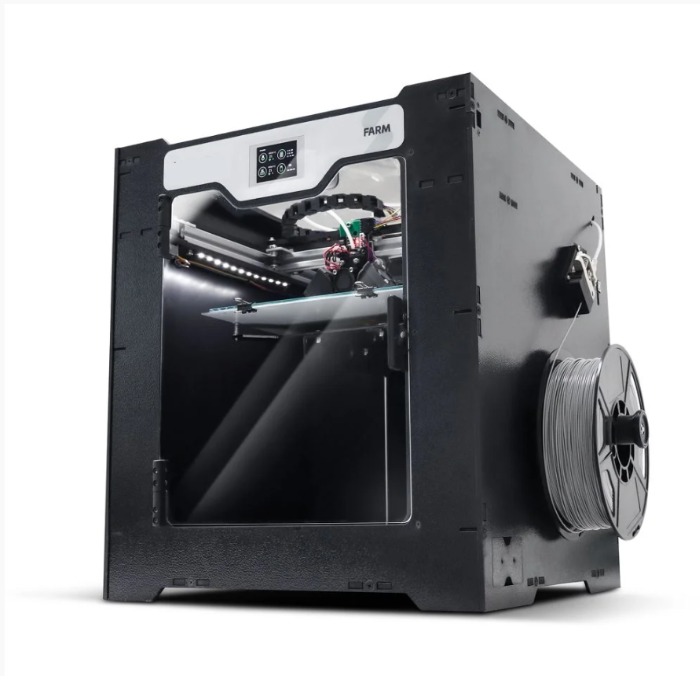Compare S5 vs FARM
Comparison between the best 3D printers
Choose the best 3D printer at the best price. The cheapest 3D printers are here.
Buy a 3D printer here with 3D Fila.
 |
 |
|
| Model | S5 |
FARM |
| Printing Material | Filament | Filament |
| Buy Filament for Ultimaker S5 | Buy Filament forSethi 3D FARM | |
| Estimated price | $6950,00 | $1127,00 |
| Manufacturer | Ultimaker | Sethi 3D |
| Release Year | 2021 | 2021 |
| Print Volume [mm] | 330x340x300 | 240x240x240 |
| Printer Size [mm] | 495x585x780 | 550x42x500 |
| Weight [kg] | 20,6 | 15,7 |
| Power Loss Recovery | YES | YES |
| Enclosed printer | YES | YES |
| Bed Leveling | Automatic | Automatic |
| Filament End Sensor | YES | YES |
| Bed type | Heated | Heated |
| Power supply system | Bowden | Bowden |
| Standard nozzle | 0,4 | 0,4 |
| Maximum Nozzle Temperature [°C] | 280 | 270 |
| Maximum Bed Temperature [°C] | 140 | 120 |
| Maximum printing speed [mm/s] | 80 | 80 |
| Filament holder | YES | YES |
| Camera for supervision | YES | YES |
| Recommended filaments | PLA, ABS, PETG, PC, Nylon, Tritan | PLA, PETG, Tritan, Flex, ABS |
| Recommended slicers | Cura | Cura, Simplify, Slic3r |
| Maximum Resolution [mm] | 0,1 | |
| Processor | ||
| Display | Display touchscreen 4,7'' | Touchscreen TFT |
| Power Supply | 110/220V / 500W | 450 W |
| Connectivity | USB / Wi-Fi | USB |
| Operating systems | Windows, Mac, Linux | Windows, Mac, Linux |
| Date of registration in the system | 2022-11-08 | 2022-10-11 |
| Release date | 2021 | 2021 |
| Extra features | The Ultimaker S5 stands out for its easy loading and unloading of materials, automatic bed leveling and excellent print quality with resolutions from 60 to 400 microns. It has dual extruders, interchangeable print cores, advanced connectivity with Wi-Fi and LAN, and intuitive software. It includes a Wi-Fi camera for monitoring, a removable glass bed, and a large build volume, making it ideal for professional and creative environments. | Sethis Farm printer offers a generous 240 x 240 x 240 mm print area, ideal for large projects. Its intuitive touchscreen display makes it easy to operate, while the intelligent sensor prevents problems by detecting filament shortages or jams. Its power recovery feature allows you to resume printing after interruptions. It stands out for its 9-point optical auto-leveling and high-performance heated bed, ensuring accuracy and versatility on different materials. Its 32-bit electronics and silent drivers promote a smooth and efficient experience. In addition, the Farm has a closed cabinet, expanding the range of usable polymers, and a turbo cooling system to speed up the process between prints. The machine also offers practicality with a storage drawer and simplified software updates. |
| Support for multiple colors and materials (AMS and CFS) | NO | NO |
Notes * |
||
| Cost-benefit | 2 / 10 | 6 / 10 |
| Hardware | 3.6 / 10 | 3 / 10 |
| Tela | . | . |
| Print volume | 4 / 10 | 3 / 10 |
| Performance | 1 / 10 | 0 / 10 |
Conclusion |
| In comparing the Ultimaker S5 and the Sethi 3D FARM, we can delineate key differences that cater to distinct user needs and budgets. The Ultimaker S5 is a high-end option, presenting significant advantages in print volume, temperature capabilities, and build quality, thus justifying its premium price point. It excels in professional environments with features such as dual extruders, advanced connectivity options, and an extensive range of compatible filaments, making it versatile for intricate projects. Conversely, the Sethi 3D FARM offers an impressive entry into the 3D printing market with a more accessible price, making it a compelling option for hobbyists and smaller projects. While its print volume and maximum temperatures are less than that of the S5, it includes essential features such as automatic bed leveling and a heated bed, which enhance its usability. The FARM is also equipped with a user-friendly interface and reliable safety features. Ultimately, if budget constraints are a primary consideration, the Sethi 3D FARM stands out as a solid performer with good value for money. In contrast, for users seeking top-tier performance and advanced features, the Ultimaker S5 is the superior choice. Overall, the decision hinges on the intended use case—professional vs. casual—and the importance of investment against the anticipated return in terms of quality and capabilities. |

